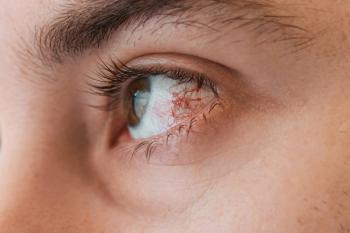
Meibomian gland disease often overlooked in diagnosing ocular surface disease
A recently published report may help raise awareness about the role of MGD in ocular surface disease.
The recently published report from the International Workshop on Meibomian Gland Dysfunction ("MGD Workshop") will hopefully raise awareness among optometrists about the role of MGD in ocular surface disease (OSD) and the importance of examining the lids and lashes in patients reporting symptoms of ocular discomfort, said Ben Gaddie, OD, and Kelly Nichols, OD, MPH, PhD.
The Tear Film and Ocular Surface Society (TFOS) organized the MGD Workshop to address the lack of any global consensus on the definition, classification, diagnosis and management of MGD, defined as a chronic, diffuse abnormality of the meibomian glands, commonly with terminal duct obstruction or changes in glandular secretions.
Dr. Nichols noted that the report distinguishes between meibomian gland dysfunction and other terms that have sometimes been used interchangeably to describe lid disease, including meibomitis, meibomianitis, and posterior blepharitis. The latter terms refer to disorders in which inflammation is present, but inflammation is not always a feature in MGD.
"In some patients, the lid appears normal, not injected, but there is an abnormality of the material expressed from the meibomian gland," she said. "This is often termed non-obvious MGD. In fact, there is limited to no evidence that inflammation is present inside the gland."
New classification of MGD
The MGD Workshop report acknowledges that current understanding of the pathophysiology of MGD focuses on obstruction of the meibomian gland orifice. The MGD Workshop members classified MGD into two major types: low delivery and high delivery. Low-delivery MGD was further divided into hyposecretory and obstructive subtypes, including cicatricial and non-cicatricial forms.
Obstructive disease is the most common form of MGD, and hyposecretory disease is not well understood, Dr. Nichols said. "Whether hyposecretory disease is the end result of obstructive disease or a separate entity, perhaps related to aging, is not clear," she said.
The report also recognizes that the hyposecretory, obstructive, and hypersecretory forms of MGD can be either a primary disorder or secondary to exogenous factors, such as medication use, or comorbid ocular or dermatologic diseases, such as ocular pemphigoid, seborrheic dermatitis, and acne rosacea.
Newsletter
Want more insights like this? Subscribe to Optometry Times and get clinical pearls and practice tips delivered straight to your inbox.



















































.png)


